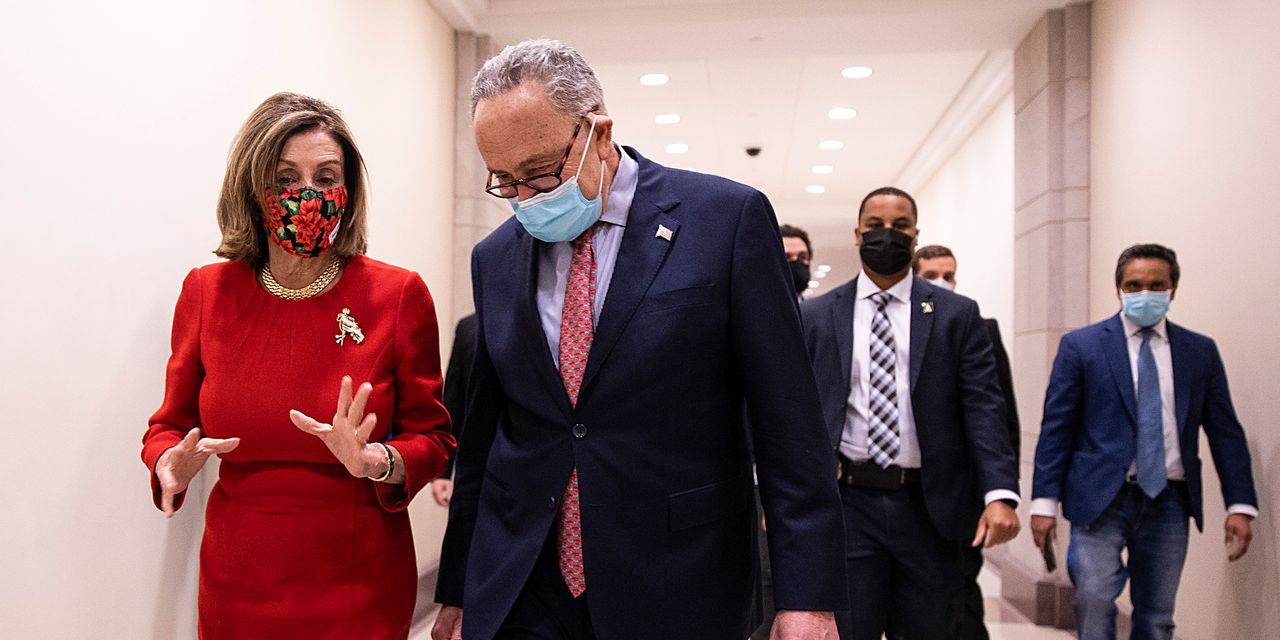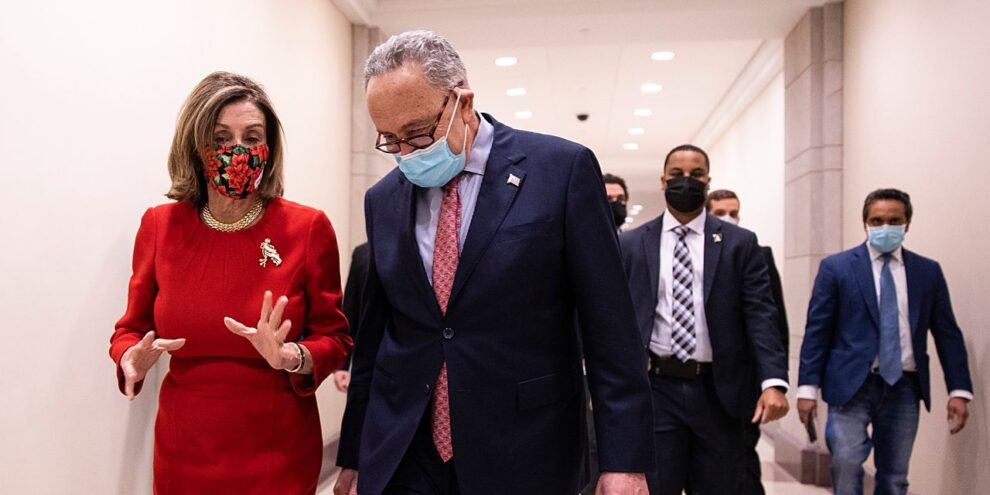
Whether borrowers will resume paying their student loans on February 1 will likely be up to President-elect Joe Biden, after Congress left any pause on student loan payments and collections out of the stimulus bill passed Monday.
Still, the $900 billion in coronavirus aid that Congress passed will likely impact the way students finance college and make it more affordable for some.
As of now, the freeze on student loan payments and collections is set to expire on January 31. Part of the CARES Act, the coronavirus stimulus bill passed in March, the pause was originally set to expire on September 30, but was extended by President Donald Trump through December 31.
Earlier this month, Secretary of Education Betsy DeVos announced that her agency would extend the payment pause through January 31, amid concerns from advocates and student loan companies that ending the freeze right after the holidays and just 20 days before a new president took office could create administrative and financial headaches.
“We need to get off this treadmill,” Persis Yu, the director of the Student Loan Borrower Assistance Project at the National Consumer Law Center, said of the incremental extensions of the payment pause. Congress’ decision not to act on it, “creates a lot of anxiety for borrowers,” she added, “and I’m sure a lot of anxiety for servicers as well. This system needs certainty.”
Now the first opportunity to extend the pause will come on Inauguration Day, just 11 days before the freeze is set to expire, making it challenging for borrowers to financially plan amid still widespread unemployment, and for the student loan system to adjust.
Advocates say Congress’ failure to act on student loan payments increases the urgency for President-elect Biden to provide relief for borrowers in the form of extending the payment pause and through some kind of student loan cancellation.
“This just creates an even stronger case for him to do more on day one,” said Alexis Goldstein, senior policy analyst at Americans for Financial Reform, a coalition of consumer, labor and other groups.
Though lawmakers didn’t extend the student loan payment pause, the package of bills passed Monday contains other provisions that could impact student loan borrowers and college students. They include:
Borrowers won’t be taxed when their employers pay their student loans
Over the past few years, major employers have increasingly been offering student loan repayment as part of their benefits packages to attract employees. These companies and the firms that facilitate the benefit have argued for years that a major hiccup to more widespread adoption is the tax treatment of any help paying down student loans. Traditionally, money that a company puts towards an employee’s student loans was taxed as income for the employee.
As part of the legislative package passed Monday, Congress extended a provision that allows employers to treat up to $5,250 per employee in student loan payments the same way they would wages — as a deduction — and allows borrowers to receive the money tax-free. The provision was set to expire on January 1, but the bill stretches it for five years.
While this is likely welcome news for a relatively small subset of student loan borrowers employed by major firms, it will do little to alleviate the financial challenges the bulk of borrowers — particularly those who are facing unemployment due to the pandemic — are facing, advocates say.
“That is disappointing because Congress isn’t really out front here saying that they’re trying to prioritize relief for everybody,” Goldstein said. “Instead they’re spending money extending this tax break.”
Emergency financial help for college students
The COVID stimulus bill will provide nearly $23 billion to colleges and universities, some of which the schools must use to provide emergency financial help to students.
The pandemic has posed major challenges to colleges’ already stretched-business model by putting revenue from tuition, room and board and other sources — for example, conferences or summer camps — at risk. Schools have also had to spend more on financial aid to lure students and have incurred pandemic-related costs, ranging from Zoom accounts to plexiglass.
What’s more, given that state budgets are squeezed and the stimulus bill didn’t include funding for state and local governments, it’s likely that public colleges will face cuts from their state houses, which could push them to raise tuition to make up for lost funding.
The relief provided by the stimulus bill likely won’t be enough to mitigate those challenges. College lobbying groups had estimated the pandemic’s cost to schools and its students to be $120 billion.
Megan McClean Coval, the vice president for federal policy and relations at the National Association for Student Financial Aid Administrators, called the funding “welcome relief.” Still, she said. “It will not go far enough to help colleges and universities and subsequently their students with all of the expenses and revenue hits that they have incurred.”
A simpler financial aid application and earlier notification of how much aid a student will get
The package of legislation passed Monday made progress towards a long-time bipartisan goal: Simplifying the Free Application for Federal Student Aid, the form students and families fill out to access government grants and student loans.
The number of questions prospective students need to fill out will be reduced — by exactly how many questions varies by family. In addition, households will be able to pull tax information directly from the IRS into the form, streamlining the process.
The bill also means that students can find out in 9th or 10th grade (or even earlier) whether they qualify for the maximum Pell Grant, the money the government provides low-income students to attend college. There’s some evidence to indicate that knowing money is available for college can push students towards attending.
The changes passed Monday, which are scheduled to take effect for the 2023-2024 school year, will allow students to use basic information, like family size and adjusted gross income to see whether they qualify for the maximum Pell Grant before they even start filling out the form.
In addition, the FAFSA will no longer ask students whether they’ve been convicted of a drug offense or about their selective service status. Having those questions on the form “ended up at best, really tripping people up and at worst prohibiting them from being eligible for financial aid,” Coval said.
Expanding eligibility for Pell Grants
In addition to making it easier for students to know whether they qualify for the maximum Pell grant, the bill widens the net of students eligible to receive the grant.
The legislation repeals a ban on incarcerated students accessing the Pell grant, a prohibition that’s been in place since 1994. Politicians, as well as advocates and researchers, have said increasing access to funding for college for incarcerated students can be an important tool for reducing recidivism.
Students who were defrauded by their colleges will also have their Pell eligibility restored through the legislation. Students are limited to six years-worth of Pell grant eligibility and right now, borrowers who had put their limited Pell grant funds towards attending scam schools couldn’t recoup those grants.
The legislation passed Monday will re-start the Pell grant eligibility clock for borrowers who receive a borrower defense discharge, or a cancellation of federal student loans incurred at schools that defrauded students.
College students will have access to subsidized loans for longer
Right now, students who qualify for subsidized federal student loans — loans where the government pays the interest while a student is in school — are only eligible to use them for 150% of the length of their program. The legislation passed Monday repeals that limit, allowing students access to subsidized loans for longer.
Changes to how we talk about families’ eligibility for aid
When students fill out the FASFA, the information is used by states and schools to determine what is called an Expected Family Contribution — essentially the amount the formula calculates a household should be contributing to college costs.
The legislative package passed Monday changes that language to describe the number as a Student Aid Index. While it may seem like semantics, the change more accurately reflects what that number really means, said Robert Kelchen, an associate professor of higher education at Seton Hall University.
“When you hear expected family contribution, you think this is how much the family should pay,” he said. “In reality, that EFC is not really tied to ability to pay and students and families are often asked to pay a lot more than the expected family contribution.”
The legislation passed Monday will also allow a student’s financial aid index to be negative, indicating that they could receive up to $1,500 of financial aid in excess of their school’s cost of attendance. That change is recognition of “the incredible amount of financial need that many students have,” Kelchen said, and “that states and colleges are using that expected family contribution to figure out who has the most need.”
“Cutting that number off at zero, means that 40% of students have that same zero number, it’s hard for states and colleges to figure out among that group, who needs the money the most.”
Acknowledging the role that students may play in contributing to family finances
Over the past several years, it’s become increasingly clear that college students play a role in contributing to their households’ finances and college costs. The package of legislation makes some changes signaling an acknowledgement of that shift.
When the bill takes effect, $9,410 of students’ income will be shielded when determining their financial aid eligibility, up from $6,840.
In addition, students still considered dependent and living at home will be eligible to receive some financial aid to cover room and board, making it easier for them to contribute to their household’s living expenses.
More clarity in how colleges calculate cost of attendance
The amount of money a student can receive in federal financial aid and grants is generally capped at their college’s cost of attendance, a mix of tuition, room and board, transportation and other expenses. But colleges have wide latitude in determining what those costs actually are.
The legislation passed Monday would standardize that methodology in some ways, making it easier for students to compare across schools and get a sense of how much they might actually pay to attend college, Kelchen said.
“Some colleges just set really low amounts or just didn’t spend much time thinking about it, which ended up with students not getting the aid they need for college,” he said.
Some examples of the ways the legislation will change colleges’ approach to calculating this cost: “The allowance for food has to actually cover three meals a day and if you’re living on campus, it has to be at least the average amount that students pay, instead of the least expensive option that may be available to a few students,” Kelchen said.











Add Comment